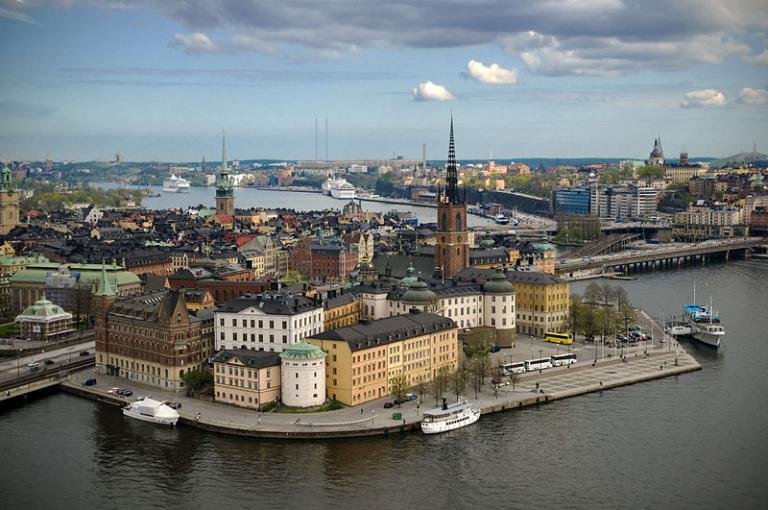
So it’s been a while since I’ve typed up one of my book summaries. I have in mind, in my more ambitious moments, attempting to write proper Book Reviews instead, but the book is due at the library so that’ll have to wait ’til next time, and this little write-up will be scantier than usual. (To be honest, the book got repetitive quickly, which means this’ll be doubly-short.)
This is the latest in the series of Europeans Know Better About Parenting Than Americans (e.g., The Netherlands and Germany), but in this case the author’s focus is on the Swedes’ emphasis on nature in their childrearing. The author, a native Swede who met and married an American as a young adult and pursued a freelance writing career from a home base in small-town Indiana, moves back to Sweden for a 6 month stay while her children are preschool/early elementary aged, after her father has a health scare (though, in the end, the expected caregiving help doesn’t really materialize and he regains his health). In fact, she moves to a small cabin in the woods outside her small-town Swedish hometown, with one bedroom and a sofabed, and with the children bringing only as many toys as they could fit in their luggage.
She sets the context with her experiences in the US: walking to the daycare, kids in the stroller, and being offered rides by sympathetic neighbors who think she doesn’t have a car; growing frustrated at the degree to which outdoor playtime at daycare and outdoor recess at school is cancelled because the weather is deemed too cold or too likely to rain, or because classmates weren’t properly dressed; being not just scolded but fined for allowing her kids to splash in a stream at a local state park — all things which wouldn’t happen in Sweden. In fact, walking everywhere is perfectly normal. Her older (2nd grade) daughter’s first day of school coincides with a snowstorm which in the US would have resulted in a Snow Day, but in Sweden, the teachers use it as an opportunity to add in an extra-long extra afternoon recess so that the kids, all properly dressed, can play on the sledding hill at the school. And, by law, even privately-owned land (e.g., farms or forests) is available for the public to use, so long as one doesn’t cause any (significant) damage (though at the same time, the “leave no trace”/stay on the path demands don’t really exist in the same way).
McGurk describes a strong conviction that fresh air is important to one’s health. From the practice of bundling up infants for naps outdoors except in the most brutal of weather, to the extensive amount of time spent outdoors in daycare (including eating outside as well as playtime), to the scooting of children outdoors to play on the weekends, to the enthusiasm with which adults spend time at outdoor cafes when weather turns even marginally hospitable — it’s all-encompassing.
What’s more, as far as the children are concerned, their outdoor time is not a matter of structured lessons, but free play, with staff believing that children do best when they are left to their own devices, to construct their own games, to learn their own limits when tree-climbing, for instance. She cites approvingly the concept of the “forest-kindergarten” where the entire day, or as much as possible, takes place outdoors, in the forest, cooking on camp stoves, and with children building forts and inventing games with the wood in the forest. And she cites a very different attitude towards children’s sports, in which until kids reach teenagerhood, sports are very low-key, with the expectation that children will learn soccer skills primarily from playing with their friends.
Children are also trained in the ways of environmentalism from the start. They learn recycling at daycare/school and then nag their parents if the home-recycling isn’t up to scratch. The (free) food at daycare/school is organic, scratch-made, heavy on vegetables and light on meat, and students are pushed to finish their plates and not take more than they’ll eat. And they learn about pollution and global warming and are taught to oppose development of open spaces.
Here are a couple things that bugged me:
In the first place, her experience was in a small town. But, per Wikipedia, 85% of Swedes live in urban areas. Although she says that they are just as nature-oriented, and claims that they’ll take the daycare children on a 45 minute walk if that’s what it takes to get to a nature area, it feels very incomplete to paint a picture of a paradise in which everyone can shoo their kids outdoors into the woods.
And in the second place, I could not really get a picture of whether this love of nature that parents are inculcating into their children, is something they themselves experience, or if it’s simply considered, it its own way, to be the method of creating high achieving adults, much like Americans shuttle their kids from one sports practice to the next but don’t participate in athletics (except a visit to the gym, perhaps) themselves. She does cite a theologian attributing love of nature to the decline of religion: “When traditional faith is waning we search for something else to relate to. We need something to create narratives and gather strength from” (p. 31), but most of the activities she cites are participated in by children, not families.
But here are two takeaways: being outdoors is important, and Americans (myself included) could do a lot better about this, whether it’s with respect to chasing kids outside, or just letting them be outdoors at recess, or how we spend our time as adults — and that requires a shift in attitudes about risk and nature protection, because “stay on the trail” and “take only photographs” are a pretty good way to make outdoor time a lot less meaningful than it has the potential to be.
And this is a demonstration of the fact that culture encompasses a lot more than just whether you buy your food at “ethnic” grocery stores and whether your kids go Saturday School to learn a language or a type of dance or some traditional folktales. In McGurk’s telling, anyway, reverence for nature, and a strong preference for spending time outside , with specific leisure activities like hiking is a significant part of Swedish culture. Can a country like Sweden with these sorts of cultural attributes, pass on these values not just to their children but to newcomers to their country?
Image: https://commons.wikimedia.org/wiki/File%3ARiddarholmen_from_Stockholm_City_Hall_tower.jpg; By Benoît Derrier from Stockholm, Sweden (Stockholm) [CC BY-SA 2.0 (http://creativecommons.org/licenses/by-sa/2.0)], via Wikimedia Commons












